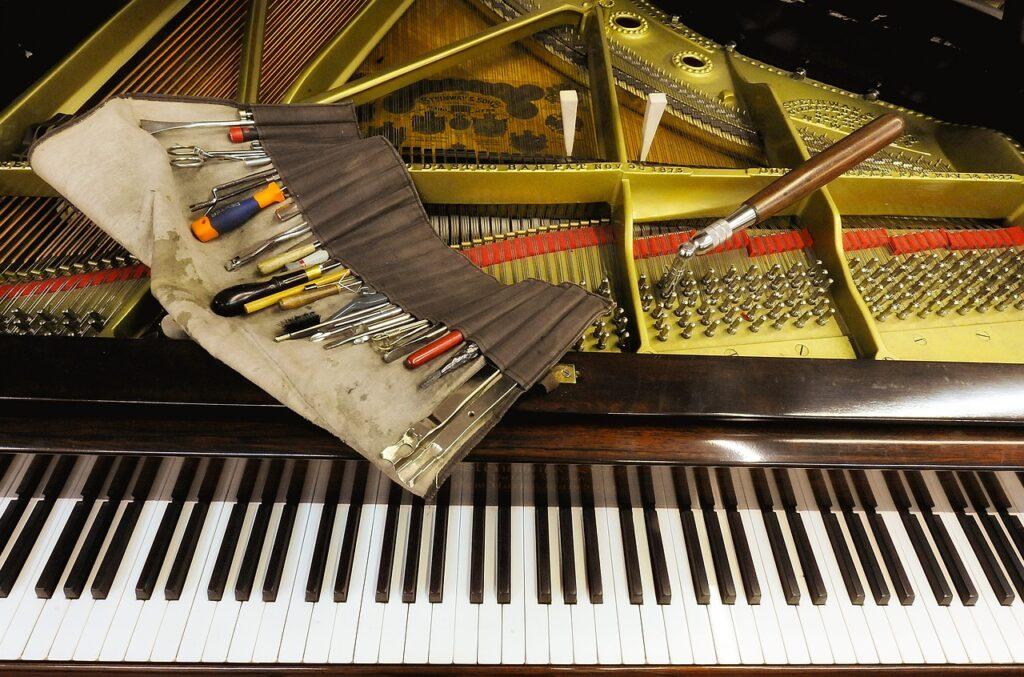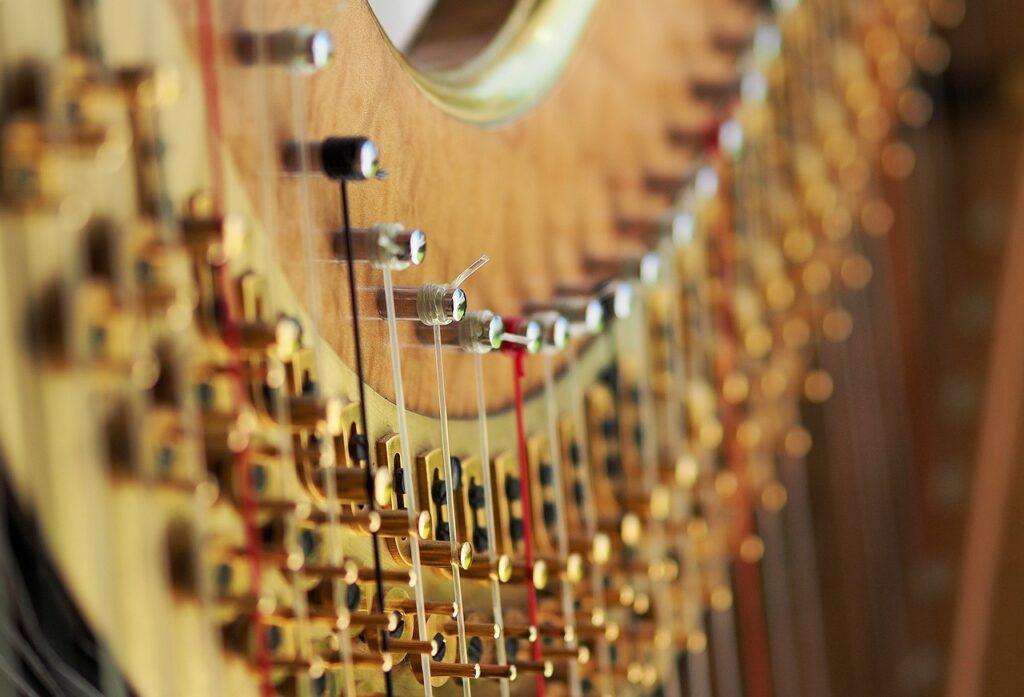Estimated reading time 3 minutes
Table of Contents
Introduction
What’s the difference between just intonation and equal temperament? They differ in terms of how they sound, the number of notes, and their user friendliness. Keep reading to learn about the advantages and disadvantages of each.
This article uses technical musical terms. For definitions, see the Glossary at the end of the post.

The Difference Between Just Intonation and Equal Temperament: The Advantages and Disadvantages of Equal Temperament
What’s the difference between just intonation (JI) and equal temperament (ET)?
Let’s look at ET first:
- You’ll find ET easier to use because it divides the octave into 12 equal half-steps.
- This means that a semitone’s size between any two adjacent keys on the keyboard will be the same.
- Also, having fewer notes makes ET less complex to understand than JI.
According to Owen Jorgensen, scientifically accurate ET had been widely adopted in Western music in the early 20th century. Why?
- It (like the well temperaments) allowed musicians to play in any key without having to retune their instruments.
- Which musicians had to do with JI and meantone temperament.
- However, ET’s strength comes with a cost.
One disadvantage of ET revolves around the fact that it has fewer notes than JI.
- In JI, the notes have been tuned so that it creates better sounding harmonies.
- This means that JI can, in theory, have an infinite number of notes.
- Each note has a distinct frequency that resonates with the other chord tones to create a strikingly rich sound.
In contrast, ET has only 12 notes, which sound barely in tune when played together with each other.
- ET’s harmonies don’t resonate as well as they do in JI, because ET has sonically compromised major thirds.
- As a result, the chords will have beating and weak tone color, which can diminish your audience’s listening pleasure.
ET Tuned Major Chord:
JI Tuned Major Chord:

The Difference Between Just Intonation and Equal Temperament: The Advantages and Disadvantages of Just Intonation
Now to the flipside of the coin, the main difference between just intonation and equal temperament is that JI’s harmonies sound in tune.
- The harmonic intervals in JI create a rich, lush sound. Why?
- Because JI has been tuned to the harmonic series – a set of frequencies that naturally occur within vibrating strings.
- Thus, tuning JI’s notes to the harmonic series allows the chord tone’s partials to resonate with each other.
However, JI sounds melodically out of tune because the major thirds’ tuning sounds too low when used in melodies.
- In addition, each note gets locked into the tuning of the song’s key.
- That can make it more difficult for musicians to play as they may have to adjust the tuning to match each new key.
- Either that or they’ll have to play on modified or purpose-built instruments.
In addition, several other factors make JI more challenging to use:
- The number of notes in the tuning system
- The types of instruments that can play it
- The theory behind how it works
- How it’s notated
Concluding Thoughts to “What’s the Difference Between Just Intonation and Equal Temperament?”
The difference between just intonation and equal temperament lies in the focus of each tuning system:
- ET is easier to use and has been widely adopted. However, its harmonies don’t sound as good as JI’s.
- JI sounds harmonically in tune but can be melodically flat.
- JI has more notes than ET, making it more challenging to use.
- Also, JI has complex notation systems and requires a good understanding of tuning theory.
- That makes it difficult for casual musicians to learn and perform JI, especially those who don’t want to invest a ton of time.
Both tuning systems have their strengths and weaknesses, and the choice of which one to use depends on your musical goals.
For a compromise solution between JI and ET read these Supplemented Equal Temperament posts:
- How to Micro Tune the Keyboard to make the Chords Sound Awesome
- How to Use an Extremely Accurate Guitar Strobe Tuner: to Make Your Guitar Sound Awesome
Related Content
- Is Just Intonation Impractical?
- Choosing the Right Sound to Play with Just Intonation
- Intonation and Supplemented Equal Temperament
© 2023 Geoffrey Keith
Join me for in-person or online lessons today!
Glossary
Singing Sixteenth Note Rhythmic Syllables
Have you gotten down reading the easier rhythmic syllables, but want to learn more? As you progress, you will hear that the added rhythm makes performing melodies much more fun. Read more to learn about singing sixteenth note rhythmic syllables. Estimated reading time 4 minutes.
Read MoreMilestone: 300 Posts of Thought-Provoking Musical Advice
Dear readers, I’m happy to announce the significant milestone of posting my 300th blog article. Keep reading to learn more. Estimated reading time 2 minutes.
Read MoreHail the New Year with the Popular Old Lang Syne Song
Are you looking for the popular “Old Lang Syne” song? In this post, you’ll get the essentials: 1) a video of the song, 2) the lyrics, and 3) sheet music with easy-to-read shape notes and a sing along soundtrack. In addition, if you’re asking, “What in the world does the title ‘Old Land Syne’ mean?” I’ll answer that question as well. Keep reading “Hail the New Year with the Popular Old Lang Syne Song” to learn more. Estimated reading time 2 minutes.
Read MoreSight Singing Chromatic Shape Notes
Do you have basic sight singing down, but want more than seven notes? “Sight Singing Chromatic Shape Notes” shows you how to sing sharps. In the last shape note post, we sang the first half of the chorus from "You’re a Grand Old Flag." In this post, we will sing the second half of the chorus. However, we will need to learn how to sing sharp notes to do this. Read more to learn about sight singing chromatic shape notes. Estimated reading time 3 minutes.
Read More




